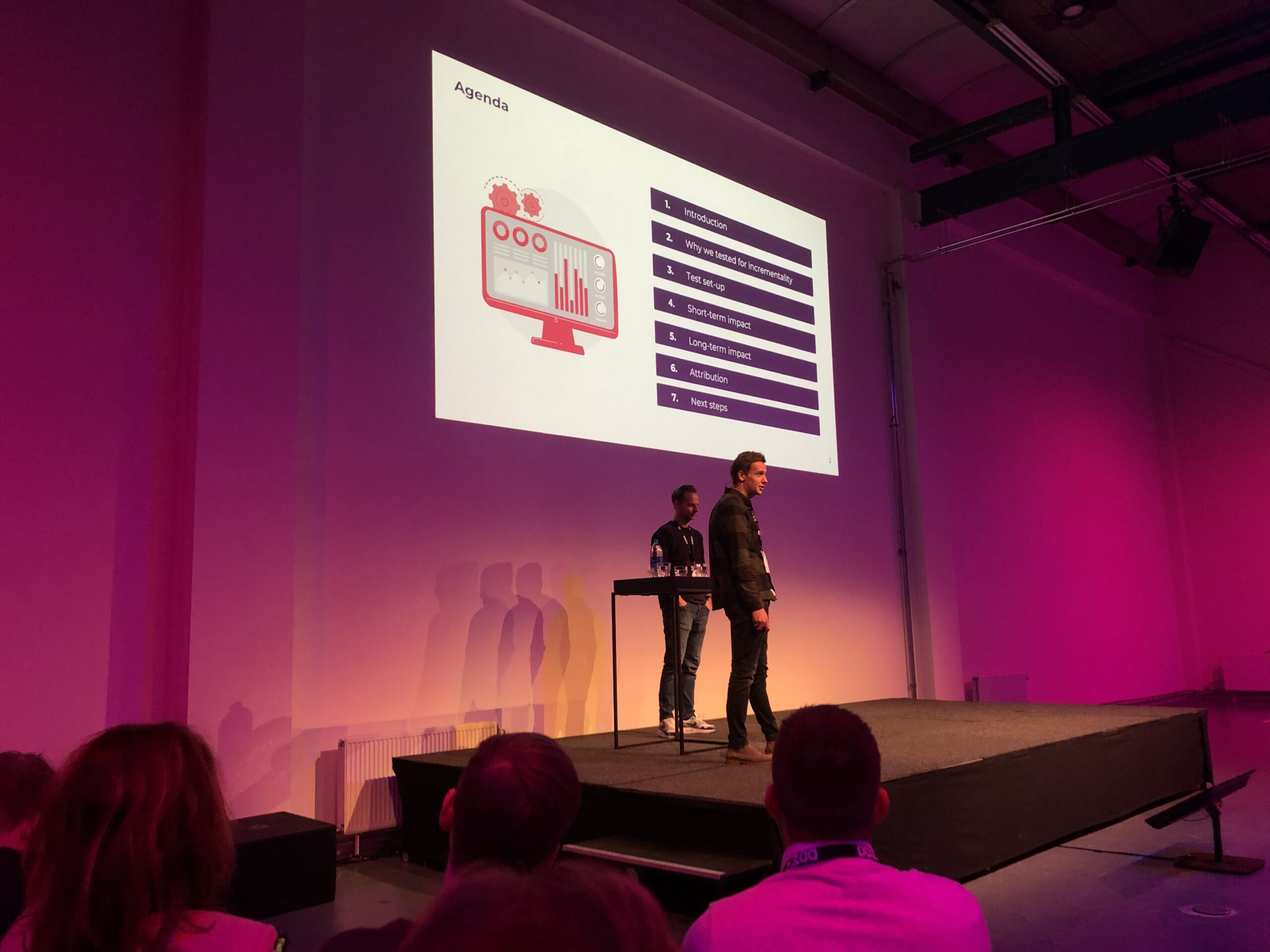L'incrémentalité est un sujet dont on parle souvent ces dernières années en ce qui concerne le référencement payant. Après avoir constaté l'efficacité des campagnes - en particulier lorsqu'elles utilisent le modèle d'attribution au dernier clic - les budgets ont augmenté au fil des ans et de plus en plus d'entreprises utilisent ce canal par défaut. Avec l'évolution du paysage en ligne, comme l'introduction d'autres modèles d'attribution, les entreprises commencent à se poser des questions : dépensons-nous trop ? Ne sommes-nous pas en train de brûler de l'argent ? Ce sont souvent des questions que les spécialistes posent aux cadres de haut niveau. La mesure de l'incrémentalité permet de le (dé)prouver. C'est exactement ce que Wehkamp a fait et pourquoi il l'a fait. Lors de l'événement Friends of Search, Mitch Komen et George Radix de Wehkamp ont présenté leur méthode de mesure de l'incrémentalité, les résultats et les enseignements à en tirer. Dans cet article, nous mettrons l'accent sur leurs principales conclusions.
Expériences GEO
Sur la base de ces questions, Wehkamp a décidé de créer et de mener une expérience pendant 4 semaines. Leur méthode d'essai : les géo-expériences. En divisant les Pays-Bas en deux parties, ils ont créé un groupe test et un groupe témoin. Avant de lancer l'expérience, une analyse des tendances basée sur des data historiques a été réalisée afin de pouvoir mesurer l'impact causal : quelles auraient été les performances si les campagnes n'avaient pas été désactivées ? Bon à savoir :
1) Le modèle d'attribution utilisé par Wehkamp : dernier clic non direct avec un intervalle de 7 jours.
2) Il s'agit uniquement de campagnes sans marque (les campagnes avec marque sont déjà supprimées chez Wehkamp en raison d'une expérience antérieure d'incrémentalité).
3) L'expérience a été réalisée pour les publicités Google et Microsoft.
4) Desdata First-party ont été utilisées pour obtenir des informations sur les clients actifs, nouveaux et réactivés.
L'impact à court terme
Le premier jour, l'impact sur le trafic était déjà perceptible. À la fin de l'expérience, indépendamment de l'attribution, ces effets peuvent être considérés comme l'impact incrémental du référencement payant pour Wehkamp : -15% de trafic. +2,7% de taux de conversion, -13% de commandes, -9,1% de revenus, -13% de bénéfices, -40% d'acquisition (nouveaux clients) et -31% de clients réactivés. Résultat : 30% de surévaluation sur le ROAS (retour sur investissement publicitaire) ou 8% de surévaluation sur le POAS (profit sur investissement publicitaire).
L'impact à long terme
L'impact sur les nouveaux utilisateurs et les utilisateurs réactivés a été le plus important et le plus préoccupant. Pourquoi ? Si l'on examine les chiffres de plus près, on constate que la perte de revenus est moins importante pour les clients fidèles (-12 %) que pour les autres clients (-24 %). En outre, lorsqu'on examine l'impact à long terme et qu'on calcule la "valeur future manquée" des clients non acquis au cours de la période de test en analysant les performances de la base de clients actifs, on constate une croissance linéaire du nombre de commandes et des recettes générées année après année par ces clients fidèles. Ainsi, ne pas avoir besoin d'un client à court terme est une perte à long terme, car les nouveaux clients peuvent devenir des clients fidèles lorsqu'on s'occupe d'eux.
(impact à long terme = perte de nouveaux clients + perte de clients réactivés * valeur du client l'année suivante)
Attribution
Les résultats dépendent bien sûr du modèle d'attribution utilisé. Wehkamp a utilisé le modèle non direct du dernier clic avec une fourchette de 7 jours. Dans ce cas, le ROAS incrémental après l'expérience était de -30%. En utilisant le modèle MTA (multiple touch attribution), le ROAS incrémental était de +2%. Cela montre l'impact de l'utilisation d'un modèle d'attribution sur les résultats et l'importance de décider : quelle est la " vérité " pour votre entreprise ?
Principaux enseignements
- Les expériences d'incrémentalité vous aident à mesurer la valeur du référencement payant et à accroître l'efficacité du budget marketing. Elles permettent également d'engager la conversation avec la direction de l'entreprise.
- Les géo-expériences sont un excellent moyen d'y parvenir.
- Vous voulez vous rapprocher le plus possible de la vérité, alors prenez des décisions sur ce qui est la vérité pour votre entreprise. Plus les mesures sont détaillées, mieux c'est : préférez le POAS au ROAS, par exemple, et utilisez un modèle d'attribution multi-touch (MTA) plutôt qu'un modèle de dernier clic. Essayez également d'utiliser autant de data première main que possible.
- La valeur des clients augmente au fil du temps. Les clients fidèles sont des ambassadeurs de la marque. Bien qu'ils soient moins touchés par l'arrêt de la publicité, ne cessez pas de faire de la publicité auprès des clients fidèles. Vous ne voulez pas qu'ils partent chez un concurrent.
- Aucune entreprise n'est la même et aucun résultat d'expérience ne sera identique. Commencez à vous tester et découvrez : quelle est la valeur de la recherche payante pour vous ?
*Cet article est basé sur la présentation de Mitch Komen et George Radix de Wehkamp.

 NOUVELLES
NOUVELLES






